![]()

^^ the path to the sale requires a little thought (like any journey)
By this point, you’ll have a system in place that’s attracting the RIGHT readers, delivering a mutual exchange of value, and setting the scene for your future relationship.
Many authors fall back to the “push” style of marketing at this point. But that’s a mistake. Your relationship has just begun. To use a dating metaphor, you’ve just got the phone number. Don’t ruin things by rushing ahead too early.
“Just because somebody joined your email list, it doesn't mean they're ready to buy. It's your job to influence their decision to invest their money, time, and trust with you.”
Instead, think about your readers’ “journey” from where they were before (they didn’t know who you were or sometimes what they wanted) to where you want them to be (they know what they want and what they want is you).
Traditionally, that journey is expressed in a diagram like this:

In other words, the reader first has to be aware your work exists. Then they will weigh up their desires in relation to what they want vs what you offer. Then a purchase takes place, followed up by the “customer experience” factors that encourage loyalty and future sales.
Every point on that graph above is something you need to consider. From a technical standpoint, much of that involves taking orders and fulfilling sales (which, for many authors, will generally be handled by third parties, like Amazon), which leaves us free to consider the “fun stuff”.
I like to this of this as “pre launch”, “launch”, and “post launch” phases. Or “pre promotion”, “promotion”, and “post promotion”.
In other words, referring back to our quote from Robert Caldini, what we’re doing BEFORE the pitch and the sale will directly influence the success of the sale itself. But also, what we do AFTER the sale will influence future purchases.
See how far removed from the traditional “push” model this is? We’re putting the readers’ desires FIRST and tailoring out messaging around “what the reader needs to consider before buying”.
As I mentioned above, most authors fall down when it comes to that “consideration” phase. Meaning, an author has succeeded in getting attention. Succeeded in getting those “mirco-commitments” from the RIGHT readers and getting their email address for follow up.
The follow up now needs to focus 100% on the “consideration” phase. Which means, your follow-up emails need to move the reader from “aware of you and potentially considering buying something in the future” to “loves your work and can’t wait for the next book”.
So how do you do this?
As part of the “consideration” phase, it’s your job to overcome some very specific objections that your readers might have. And present your messaging in a way that encourages excitement and buzz. This all needs to happen before you ever ask for the sale.
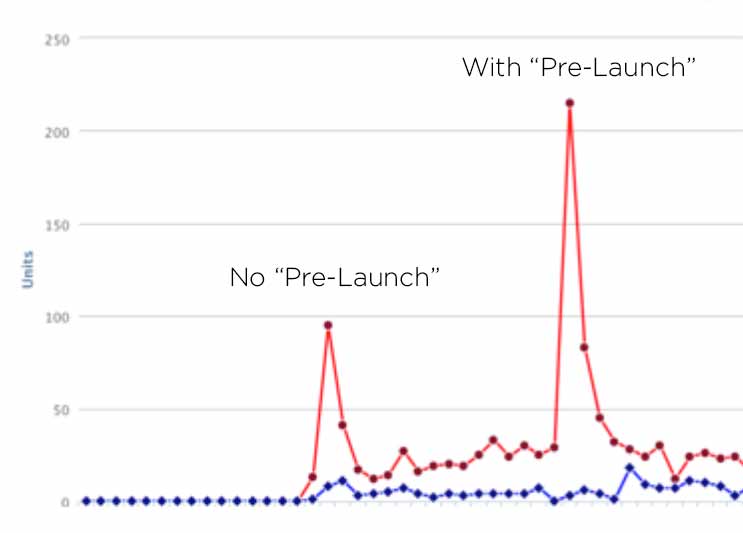
In this example, we ran a promotion for one book by segmenting part of our list into 2 groups. The first group, we just sent an email on “promotion day” letting them know it was available.
The second segment received a week of emails dealing with the “consideration” phases – that is, overcoming potential objections and building up excitement.
Group #2 significantly out-performed group #1, with more than twice as many sales in the same period.
It’s also worth noting that group #1 was a segment that had been developed using the approach we talked about on pages 1-4, so they were still receptive. But nowhere near as receptive as group #2 – where we had developed our relationship further.
The specifics of each objection will vary depending on the genre you write in, but generally they will always fall into four different categories:
Depending on your genre, industry, and price point, you may need to deal with some or all of the above. For example:
Relevance: this is where we get into “spam” territory… if you’re a Romance writer and you’re building a list of Thriller fans, you’re doing something wrong. If you’re using the approaches we talked about in pages 1-4 this absolutely won’t be an issue. But it helps to remind people of WHY your work appeals to them. This is an opportunity to offer sneak previews, sample chapters, videos (if appropriate), or other “tasters” of your work. This is largely taken care of with your Reader Magnet / free gift, but it always helps to remind people the value you bring to the table and why it’s relevant to your readers (eg – you’ve seen those blurbs saying “If you like James Patterson, you’ll LOVE this author….”. That’s exactly why this works.
Cynicism: whatever genre you write, your readers are looking for a minimum level of quality. That level varies depending on your specific market and price point, but it will always be a consideration. If your readers don’t believe you can deliver, they won’t buy. This is why your cover design, formatting, editing, proof reading, product description, and reader reviews are SO important. When you’ve got those nailed down, make sure they form part of your “pre launch” email series (cover reveals, review snippets, “behind the scenes” stories, etc) so you can show people – instead of “telling” them – the level of quality you can deliver.
Self-doubt: Generally more of a concern for non-fiction writers, this is often referred to as “special snowflake syndrome”. In other words, “Yes, but will this work for ME?”. Consider an example of a fat-loss book – you can present all the scientific evidence you want, but if your readers – for whatever reason – believe it doesn’t apply to THEM, it’s all moot. This is why case studies that span a range of different circumstances are so powerful. Consider the fat-loss example – showing results from people with a wide range of backgrounds and body-types goes a long way to combating this (and is why testimonials and case studies are so effective for non-fiction). This is generally less of a problem for fiction, although this is an excellent opportunity to showcase your reviews (preferably reflecting a wide range of positive experiences).
Procrastination: this is the #1 obstacle to overcome. We’ve all been there – you see a GREAT offer that’s perfectly suited to you. But for some reason you put off buying it until later, then promptly forget. Or change your mind. If you don’t give readers a reason to buy NOW, then a significant chunk of people just never get round to it. It’s not because they don’t like you… people are busy. You always have to give a reason to act NOW. This is why short-term price promotions and launch bonuses work so well – you’re giving people extra value for acting immediately, instead of waiting around. And this will form an integral part of any book launch or promotion you run.
When you counter all those objections BEFORE you ask for the sale, you significantly reduce the friction. You speed up the consideration phase, and nudge people towards YOU as the solution they’re looking for (whether that’s entertainment / inspiration / learning / whatever).
You elevate yourself above “all the other things” people could be doing instead, and by the time you get to the actual “selling” emails, all you need to do is point people in the right direction.
If you get it right, readers’ will actually THANK you for letting them give you money and will ask you for more (it’s true).
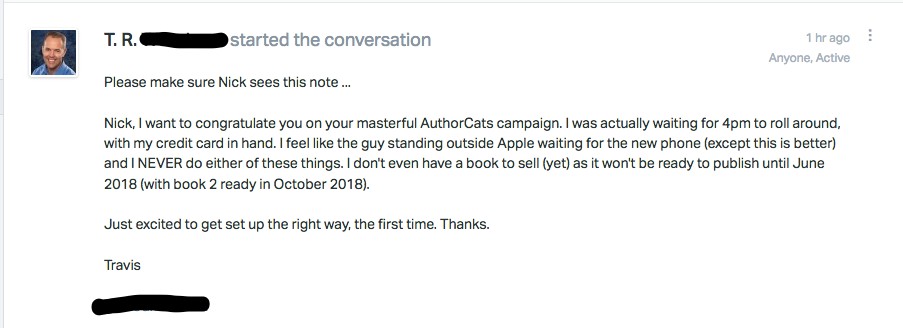 ^^ TR spent $497 on one of our products within minutes of the launch email going out… because we’d spent weeks working on “the journey”.
^^ TR spent $497 on one of our products within minutes of the launch email going out… because we’d spent weeks working on “the journey”.
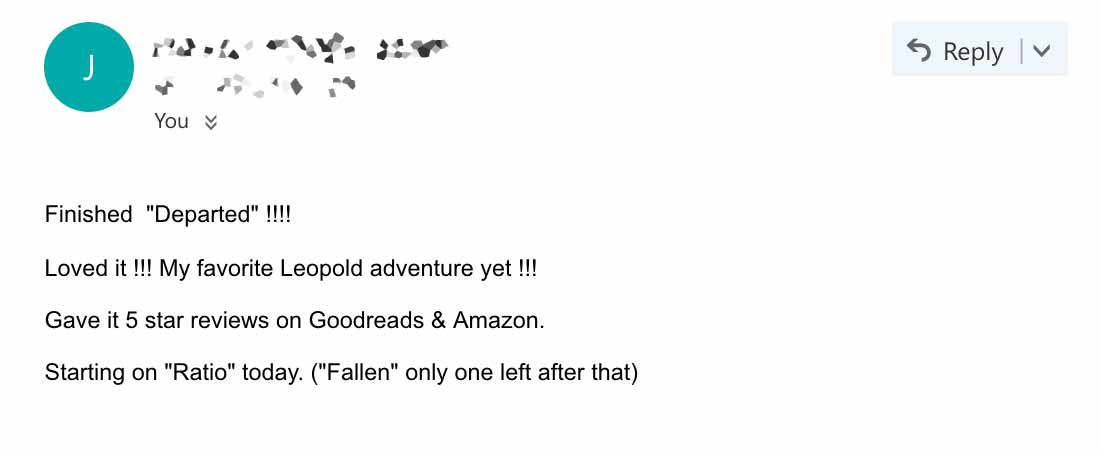
^^ John bought one book during an email promotion, left a review, and started reading the rest
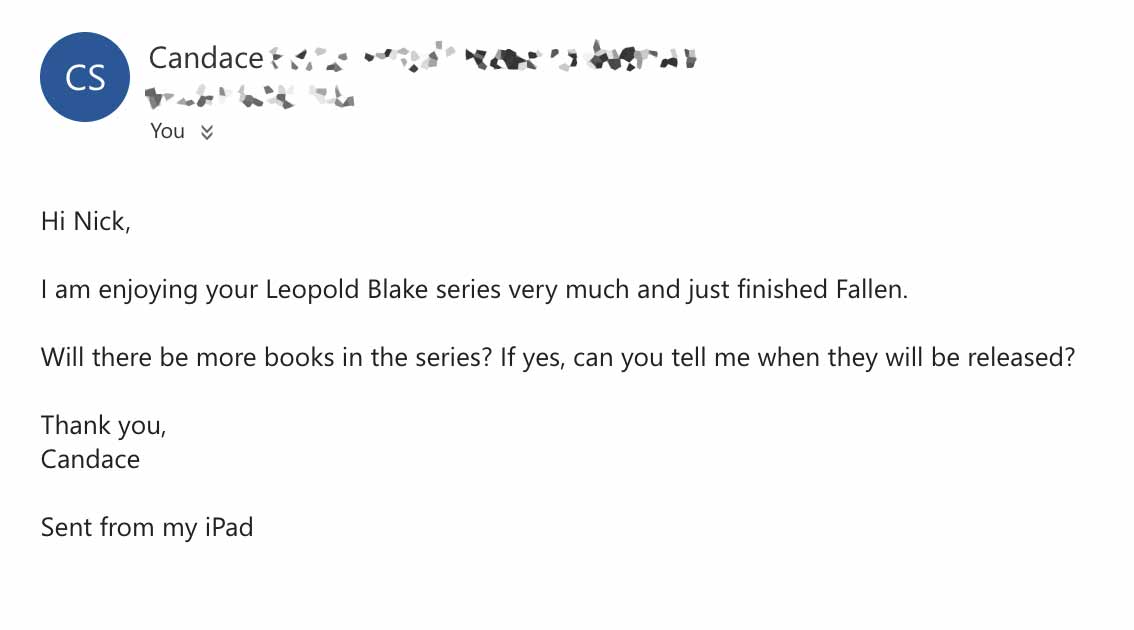 ^^ Candace bought during a launch promo and is asking for more a few days later…
^^ Candace bought during a launch promo and is asking for more a few days later…
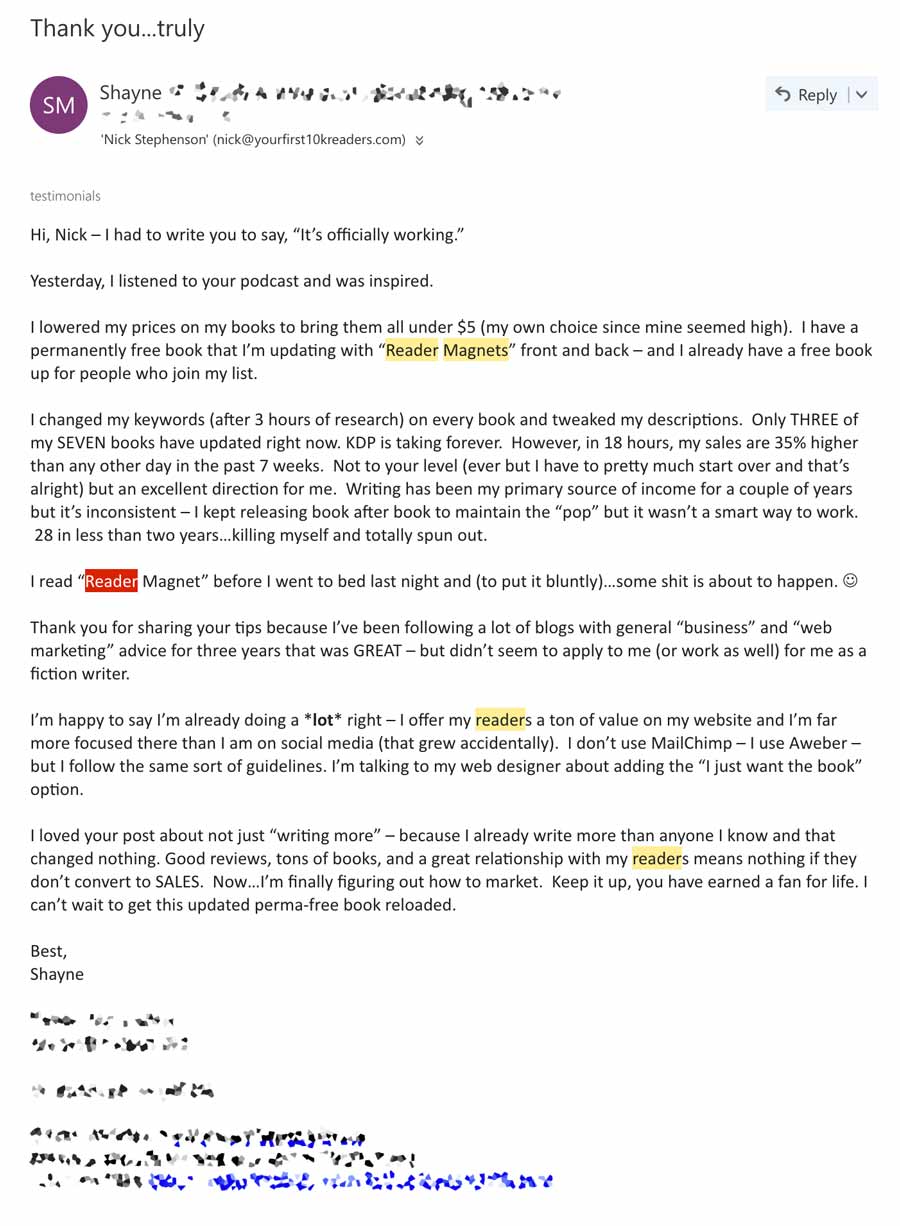 ^^ Shayne buys 2 of our non-fiction books, put the teaching into action, sees results quickly, and becomes a fan for life
^^ Shayne buys 2 of our non-fiction books, put the teaching into action, sees results quickly, and becomes a fan for life
A huge part of this process is understanding that your readers aren’t just “numbers” or “potential sales” – they’re PEOPLE. People with their own desires, beliefs, and motivations. By adapting your messaging from a “Buy now! Buy now!” approach from the beginning, and focusing on delivering your story and taking readers on a personal journey, you build an audience of life-long fans.
“Selling” isn’t “selling” any more. Instead, you’re making people happy by giving them what they want. You’re creating a lasting legacy and a long-term sustainable career (instead of a pushy marketing model that dies as soon as you turn off your ads).
And again, this works if you bring all of the principles we’ve talked about together into one overarching strategy (remember that from earlier?) to help guide your day-to-day activities – meaning… no more Author Marketing Hell.
Now, I want to show you how to bring all this together and give you some next steps: